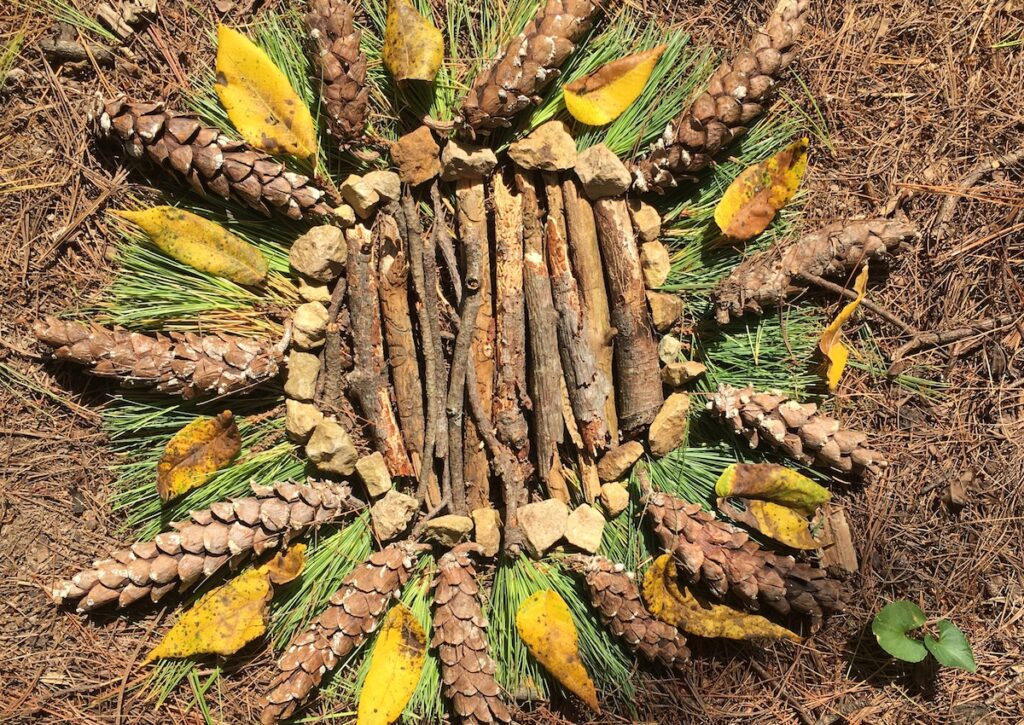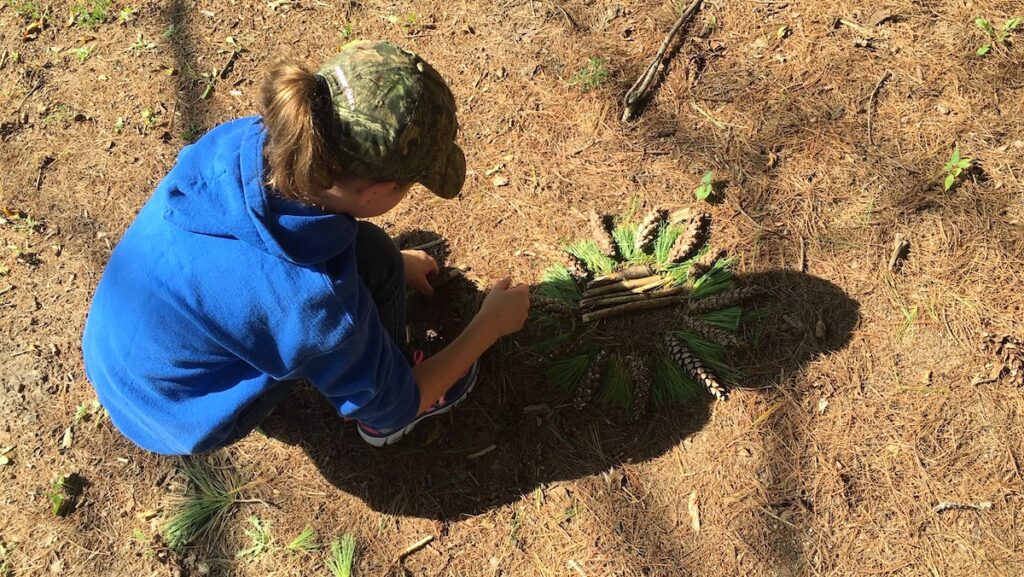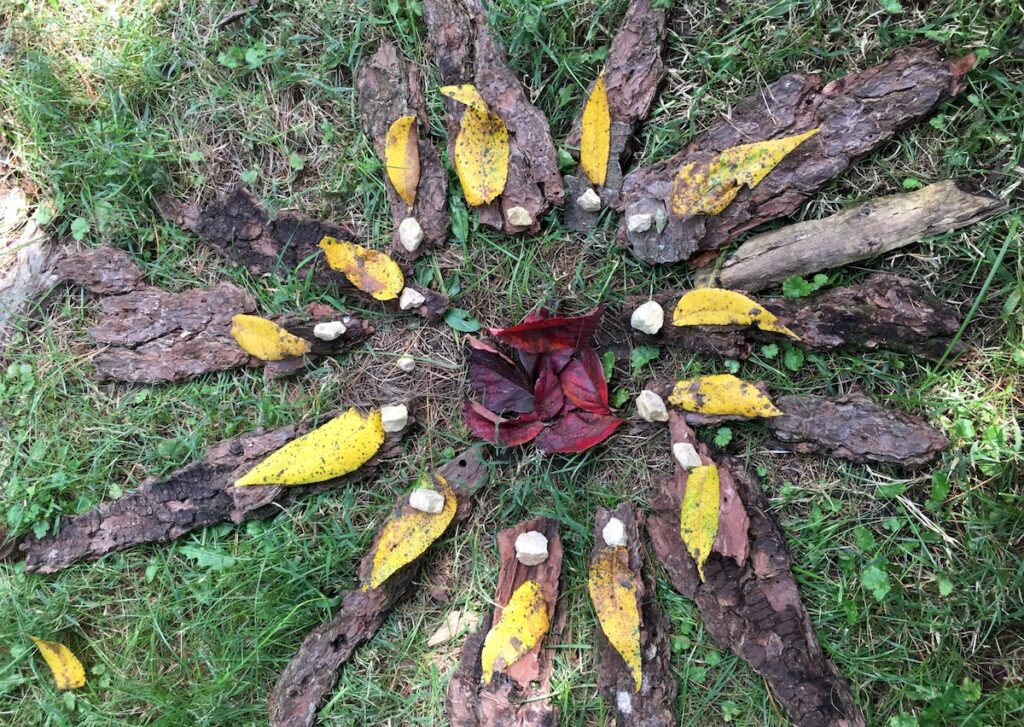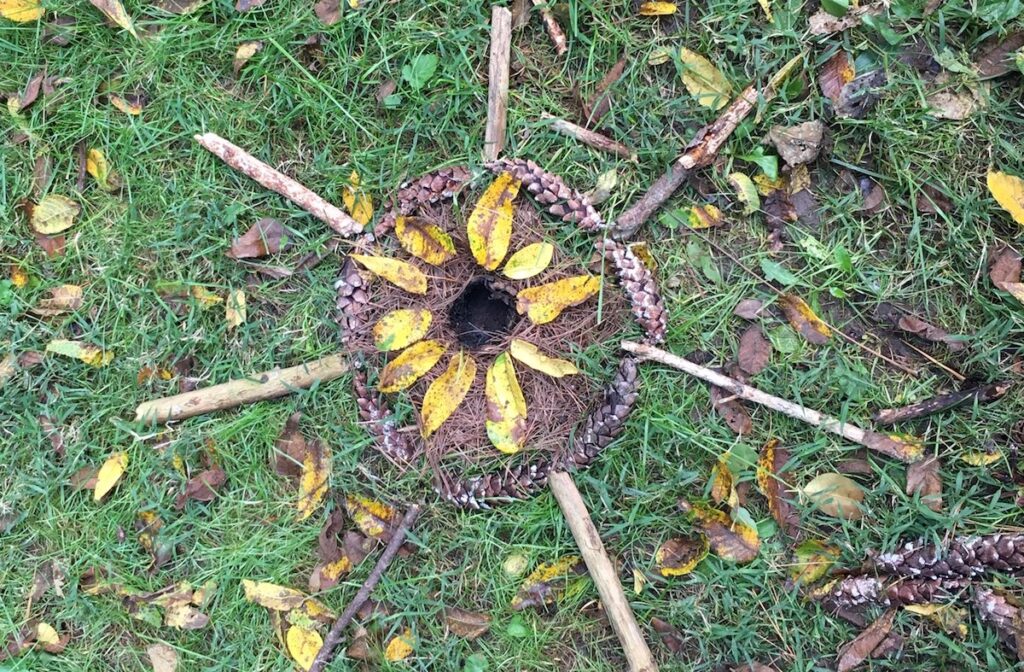Now that spring has finally sprung, consider taking your students outside to create new and exciting works of art. Switch up your routine, and get students collaborating in the great outdoors!
Simply follow the steps below to get started.

1. Reinforce the elements and principles with natural materials.
British artist, Andy Goldsworthy, is an excellent example of an artist who is not only inspired by nature but creates art using natural materials. His land art sculptures are intentionally temporary and left in their environment.
Begin by sharing images and video clips of Goldsworthy’s work. Ask students to identify how the artist created lines and shapes using natural materials. Point out different examples of radial, symmetrical, and asymmetrical balance. Have students explain how the artist used contrasting colors or values to lead the eye around the artwork.
Explain Goldsworthy’s process of leaving the finished work in nature. He knows his work is only temporary, later to be destroyed in its natural environment. Ask students how they feel about this quality of his work. Does the photograph become a work of art as a result? Have your students discuss this aesthetic question before creating temporary land art of their own.

2. Encourage students to collaborate to create their own land art.
Divide your students into small groups for this activity. They will act as collectors, sculptors, and photographers throughout the process. Students will need to gather materials from their environment to help demonstrate balance, contrast, line, shape, etc. They will work together to build their land art sculpture.
If you’re not in an area with a variety of natural materials, consider collecting items beforehand. Take a relaxing hike and pick up potential materials for your students. Pine cones, sticks, rocks, leaves, etc. would all be useful for this project.
Once the work is complete, students may take turns photographing their creation. Provide groups with digital cameras, phones, tablets, etc. to use. If your technology options are limited, you could allow groups to use a single camera or phone under your supervision. This would be a good opportunity to discuss composition, camera angles, and light source. Ask students to think about how to best represent their sculpture in a single image.
3. Be prepared for early finishers.
You may find some groups finish this activity rather quickly, while others take a lot of time and consideration in terms of how they place their materials. For early finishers, give students a variety of creative options. Students may create another land art sculpture, work independently, or help another group complete their work. These students may find inspiration from other groups by seeing different uses of materials or construction methods.
You could also have a few sketchbooks handy for students to take advantage of their time outside to draw from nature.
Have a list of drawing prompts like:
- Create a still life of at least three natural items found in your environment.
- Sketch your land art sculpture.
- Draw a landscape of the environment around you.
- Re-imagine the environment as a different season, climate, or planet.
- Sketch a portrait of your classmate and include the environment in your composition.

4. Allow your students to reflect on their experience in nature.
Once each group has completed their land art sculptures and photographed the work, ask them to reflect on their experience. How was using natural materials different from using traditional art supplies? Was the construction of the land art more or less important to them than the photograph?
Ask students to select their best photograph or one for each person in the group. Prepare to have these images printed for their next art class. Then, continue the class discussion on Goldsworthy, temporary art, and photography. Ask students to title their work and write an artist statement.
Final Thoughts
The printed images and student responses can make for a great art installation in your school! The activity helps students apply their understanding of the elements and principles in a new and interesting way.
Spring can be a stressful time of year, as students are anxious to be outside after the long winter. By providing an opportunity to get outside, you let them release some of that pent up energy, while still directing it toward a creative art process!
Enjoy the fresh air with your students and watch as they work together to create and photograph land art inspired by the great Andy Goldsworthy!
How do you engage students with art and nature?
Do you have any other outdoor activities to share?
Magazine articles and podcasts are opinions of professional education contributors and do not necessarily represent the position of the Art of Education University (AOEU) or its academic offerings. Contributors use terms in the way they are most often talked about in the scope of their educational experiences.






